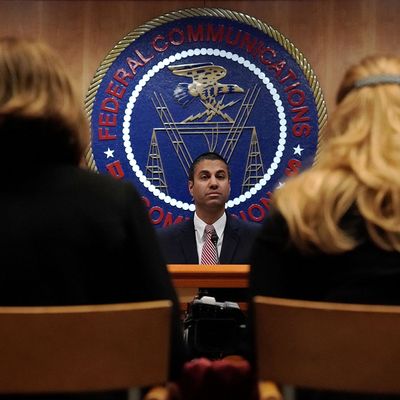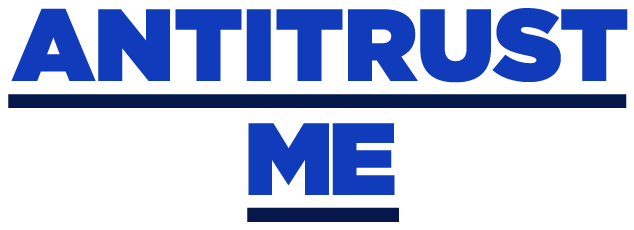
Have Silicon Valley’s biggest companies become too powerful? This series examines monopoly and power in the tech industry — and what, if anything, can be done.
If there’s a silver lining surrounding the FCC’s recent vote to undermine net neutrality under current chairman Ajit Pai, it may be the futility of the whole effort. There is a level on which the internet remains fundamentally neutral no matter what the FCC does. That’s because it is built almost entirely atop something called the Internet Protocol Suite, which was created in the 1970s by the Department of Defense. The IPS includes, among other things, a number of profoundly important technical specifications for which both the implementations and underlying theories are immaculate. They might even be strong enough to save the open internet. The catch is that they might not save it for the FCC’s constituents.
Let’s start with the Transmission Control Protocol, a part of the IPS that operates at the “transport layer” to define ways to send and receive arbitrary packets of data between computing devices, no matter how they are connected — with a physical cable, over Bluetooth, or using whatever else we come up with in the future. Once the packets finally arrive at the intended destination, they’re usually then handed off to more specialized “application layer” protocols optimized for a specific kind of task. For example, there’s FTP for file transfers, IMAP and POP for storing and sending email, SSH for remotely controlling other machines, and so on — and of course there’s HTTP, certainly the most widely used out of the whole gang, for loading sites, pages, and other resources over what we now call the web. Modularity, encapsulation, delegation; this careful separation of concerns is precisely how complex systems should be properly designed.
Networks are made of computers, and computers take instruction. They do as they are told reliably until they break, and for decades now, what we have told them to do is move information around as quickly and efficiently as possible. This is for two reasons: practical, because at the dawn of the internet it was important to squeeze bits over the limited bandwidth of dial-up modems; but also elemental, because designing any technology with intentionally suboptimal performance is self-evidently idiotic, so nobody does it — aside from the current FCC, apparently. Nonetheless, for the most part, the internet’s underlying application-layer protocols try to run as quickly as possible. This will remain true unless the internet is completely rebuilt atop a different foundation.
The language of this debate has awkwardly favored the term “fast lane” to describe preferential treatment of traffic, but there is no fast lane — only our current set of regular lanes, built as always with intrinsically cooperative and performant protocols. Pai is encouraging artificially slower lanes, which can certainly be built, but they will almost certainly never be universal across the internet. Meanwhile, application-layer protocols like HTTP, FTP, and SSH don’t ever know which type of lane they’re in, and will all continue to gobble up whatever network efficiencies they can get from TCP and the transport layer. They will intrinsically seek to preserve net neutrality as it currently exists whenever it is possible to do so, because that is how they were designed to communicate. Preferential traffic may prove to be an uphill battle for ISPs if any corner of the internet that can be neutral will remain so, any crack in the constraints exploited, every leak kept flush with flowing packets. The only way to stop this subversive tendency would be to move to yet another protocol for the web, which somehow intrinsically respects the biases implemented by the network within which it operates — but then the concerns wouldn’t be separated, as complex systems require.
Because of the way the building blocks of the internet communicate internally among themselves, net neutrality can never be fully eliminated — only partially and incompletely undermined, by selecting a specific subset of the internet and making things artificially wonky for the users and machines within those boundaries. Pai’s changes don’t hurt the internet, they only hurt the American internet, rewarding its entrenched powers by letting its internet-infrastructure companies introduce a host of new idiosyncratic restrictions that its internet-native companies must then navigate. The economic argument for doing this is suspicious at best, given that currency itself can now exist purely online!
In a sense, Pai may be right about his actions improving competition — just not where he thinks. On a global level, the very same free market Pai thinks he’s championing could easily swoop in to undermine his new changes. The entire European Union has robust internet protections, and remains available to any businesses or other entities that prefer to work within an environment that provides net neutrality. Maybe you’ll someday be able to afford real estate in San Francisco again! Given enough time, even enterprise-grade physical infrastructure can adapt; Google already operates seven data centers around the world, to its eight in the United States; and Amazon Web Services has 7 domestic data centers and 15 elsewhere. The worldwide network of submarine telecom cables is far-flung and intricate. Consider that Apple financially operates out of Ireland due to the tax benefits, or that the Pirate Bay once tried to buy a 550-square-meter micro-nation in the middle of the ocean where it could freely supply the world with BitTorrent, and when that didn’t work out, instead considered mounting servers to aerial drones. Other than the inertia of an established headquarters in the United States, there’s no reason why any company — least of all the most successful and lucrative ones — would have to put up with Pai’s vision. The internet is global. That is the whole point.
At a certain point of maturity, the aggregate entities composed through technology — cloud, blockchain, internet — develop integral properties that can no longer be controlled through paperwork. The internet was carefully designed by the engineers of a previous generation with extra insulation against even our own likely eventual stupidity, so its protocols still push in the direction of neutrality, even when the traffic says otherwise, like children jettisoning the prejudices of their parents. Trying to run the other way, the FCC hits the limits of its jurisdiction along two axes: in breadth, since its proclamations don’t apply to most of the world, and in depth, since its proposed changes at the transport layer of the IPS can’t reach down far enough to penetrate the application-layer protocols. Pai’s ham-handed reforms run counter to the logic encoded in the network design, so it’s unlikely that they’ll be effective enough to screw up the internet at large. Thanks to the intricate resiliencies that have emerged at the intersection of mathematically perfect computer-science proofs and sloppy human systems of governance, he can only really do that to the United States.






























